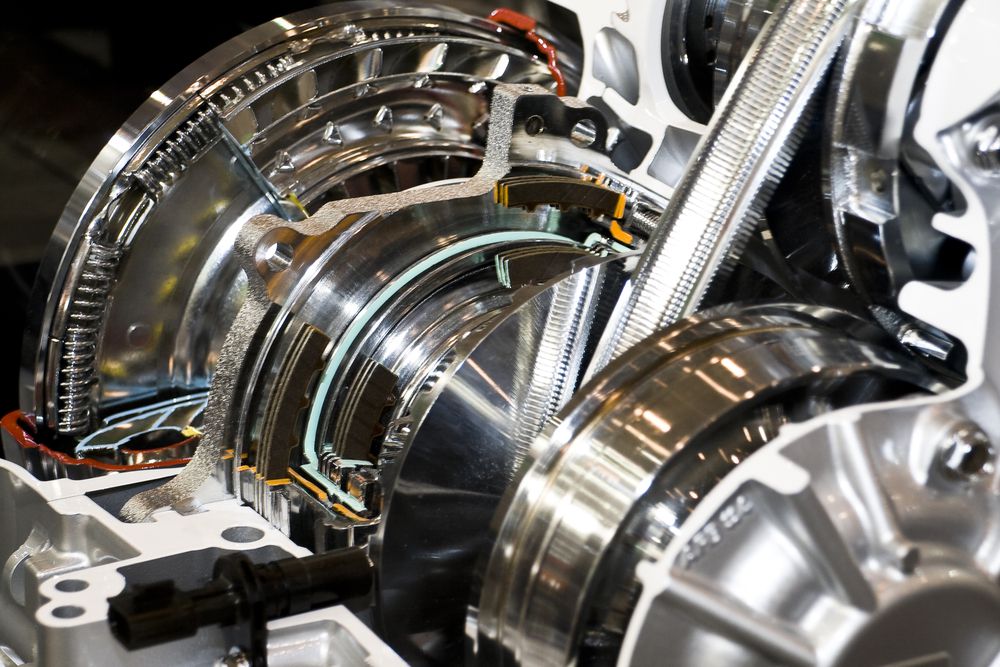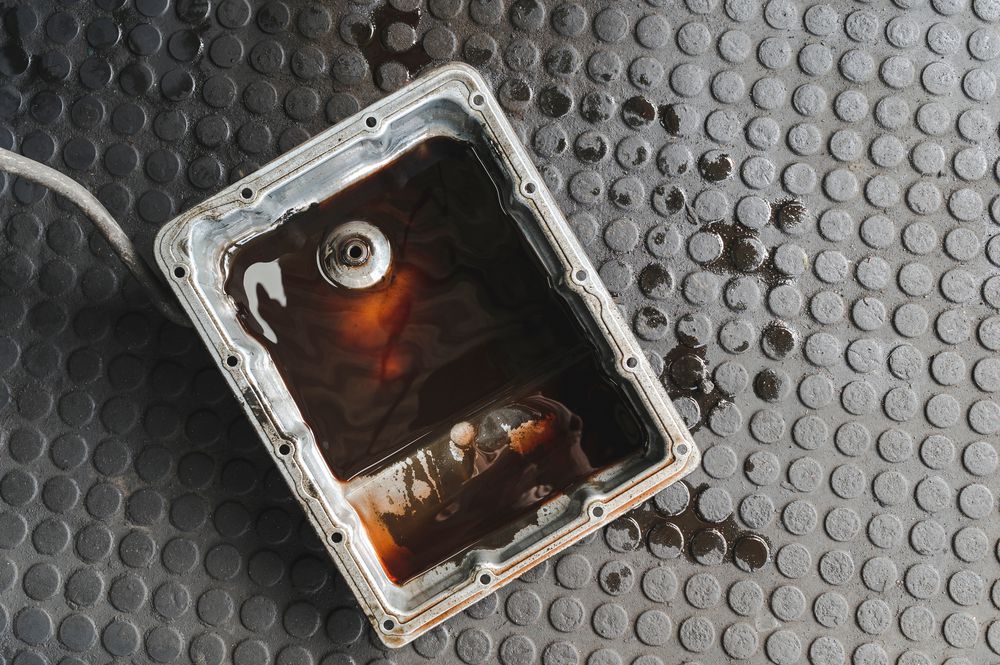When we think about a vehicle's clutch, the first thing that pops into most layperson's minds is the clutch integrated with a manual transmission. However, there are also clutches in many different types of automatic transmissions.
The main symptom of a bad clutch in an automatic transmission is when your vehicle's rpm climb and your engine gets louder as the gas pedal is depressed, but the vehicle is not accelerating as quickly as it should.
A clutch (or clutches) in an automatic transmission operates differently than a clutch in a manual transmission but has the same general purpose, which is to allow the torque from the engine to be selectively connected to, or disconnected from, the gears in the transmission.
More specifically, automatic transmissions usually have a clutch pack, a series of clutches where the clutch selected for the required gear is activated by hydraulic pressure. In contrast, a clutch in a manual transmission is engaged or disengaged via the clutch pedal.
 A cutaway of a CVT transmission.
A cutaway of a CVT transmission.
Can A Clutch Go Bad In An Automatic Transmission?
An automatic transmission contains wear parts including the clutch packs, bearings, bushing and seals that all wear as a result of friction.
Wear parts are designed to wear from friction and are necessary for the proper transmission operation.
Out of all the wear parts in an automatic transmission, the clutches are the most likely to fail.
Each gear in an automatic transmission is comprised of a set of friction plates (clutch plates) that are installed between steel plates.
When the vehicle's computer shifts gears, it opens and closes solenoids to apply hydraulic pressure to the steel plates for the specific gears, compressing the clutch plates together. They engage together due to friction and drive the gear.
Over the thousands of miles of shifting gears, the clutch plates wear a little each shift as they engage and disengage.
The clutches in an automatic transmission go bad once they have worn enough to no longer engage and slip against one another. As they slip, they generate heat which accelerates the wear process.
How Long Does A Clutch Last On An Automatic?
The clutches in modern automatic transmissions usually last anywhere from 120,000 to 170,000 miles before they can no longer hold the vehicle's weight.
Increasing the load on the clutch, which in turn makes them work harder, will shorten the lifespan, as will excessive engagements and disengagements.
Therefore, some factors that will shorten the lifespan of a clutch in an automatic transmission include:
Stop and go traffic: driving in stop and go traffic will shorten the lifespan of the clutches in an automatic transmission because of the constant engagements and disengagements. On the other hand, auto transmission clutches in a vehicle driven on the highway at consistent speeds will last a long time.
Extra weight: excessive weight will force the clutch plates to work harder, creating more heat and wearing faster.
Neglecting scheduled transmission services: transmission oil and filter changes at the manufacturer's recommended service intervals are critical to keeping your transmission working for a long time. Over time the transmission fluid will lose its cooling abilities and collect debris, accelerating the rate the clutch plates wear.
How Do You Know If Your Automatic Clutch Is Bad?
You will know a clutch in your automatic transmission is bad when the transmission starts to slip. A slipping transmission is when you try to accelerate, but the clutch plates slide against each other rather than engage due to worn friction surfaces.
A failing clutch in an automatic transmission is sometimes referred to as a burnt clutch because once it becomes worn, it generates heat, creating a burning smell.
The same problem occurs in manual transmissions.
What Does A Slipping Clutch Feel Like On An Automatic?
A slipping clutch in an automatic makes your vehicle feel sluggish. When you push your foot down on the gas pedal, the vehicle's motor will rev loudly, and the rpm will rise, but the vehicle won't accelerate as fast as it should.
Does A Bad Clutch Affect Acceleration?
Clutch problems will definitely affect acceleration because the vehicle won't move as it should when the friction plates are rubbing past each other.
 Fouled transmission fluid in a transmission oil pan.
Fouled transmission fluid in a transmission oil pan.
Can Changing Transmission Fluid Stop Slipping?
If your transmission fluid level is low or old, changing it may stop the transmission from slipping. Although in most cases, if the transmission fluid level is good and the transmission slips, the transmission will probably need to be rebuilt or replaced.
You can also try a transmission "stop slip" fluid additive as a last-ditch effort to stop a transmission from slipping; however, in most cases, it won't work, and if it does, it will only be temporary.
What Are The Signs Of Low Transmission Fluid?
The most obvious sign of low transmission fluid is low reading on the transmission fluid dipstick. Other signs are the vehicle's acceleration not matching the engine's rpm when the gas pedal is pressed and a transmission that won't engage or pops out of gear.
How Do You Diagnose An Automatic Transmission Problem?
Some signs or symptoms will help you diagnose an automatic transmission problem. They include:
Transmission slips in and out of gear
A transmission that slips in and out of gear has problems and may not have much longer to live. The problem could be due to low fluid pressure caused by a low fluid level, a plugged valve, or a bad pump.
If your transmission is slipping in and out of gear, you should get it checked out as soon as possible, as it can cause increased wear and repair costs.
Clutch Slipping
As mentioned above, if you step on the gas and the engine revs up but don't go anywhere, you could have problems with the clutches in your auto transmission.
This could be due to a low fluid level or something more severe as worn clutch plates.
A foul burning smell often accompanies worn clutch plates.
Lagging engagement
Suppose your vehicle lags when you put your foot down on the pedal before shifting roughly into gear. In that case, you probably have a problem with one of the valves in the transmission, or low transmission fluid or debris in the transmission could also cause this problem.
Bad transmission fluid
Old, smelly transmission fluid filled with debris will almost certainly lead to transmission problems sooner or later and should be changed as soon as possible.
Old transmission fluid does not dissipate heat properly, and debris can plug the fluid passages, get between clutch plates, and cause damage.
How do you check an automatic clutch?
One way to quickly check the clutches in an automatic transmission is to depress the brake pedal lightly, put the transmission in drive, and accelerate to see if the transmission clutch can pull the vehicle through the added resistance of the engaged brakes. If the transmission slips, it tells you it probably doesn't have much life left.
Conclusion
Symptoms of a bad clutch in an automatic transmission are slipping, which is when pressure is applied to the gas pedal, but the engine simply revs higher without the vehicle accelerating as it should, and a burning foul smell originating from the transmission fluid.
These symptoms result from the friction clutch plates being worn and rubbing past each other rather than engaging. This slipping generates heat which overheats the transmission fluid, creating a burnt smell.